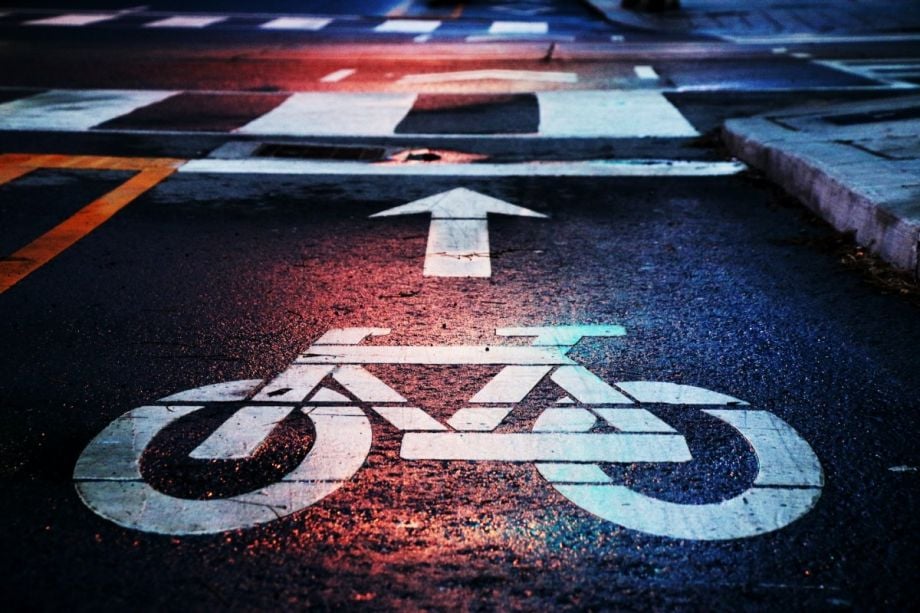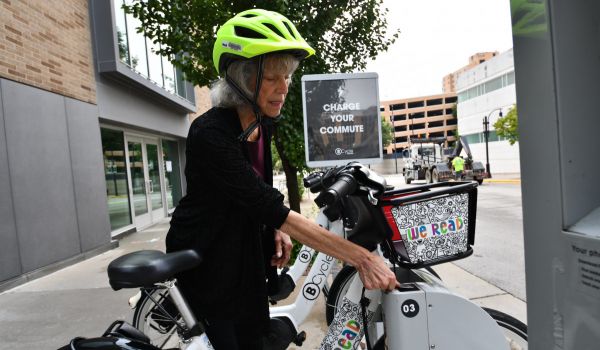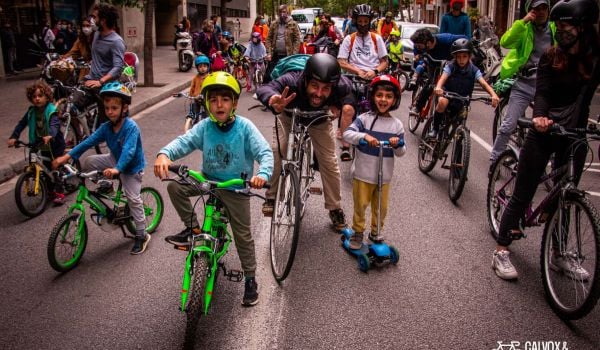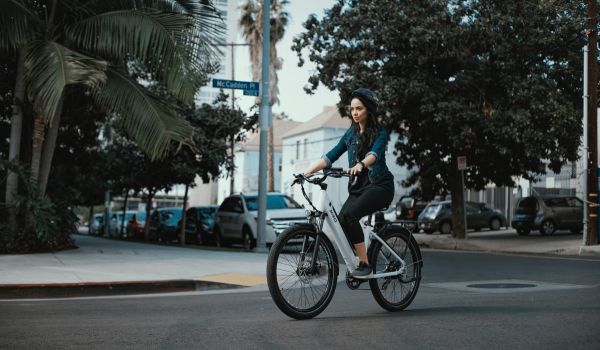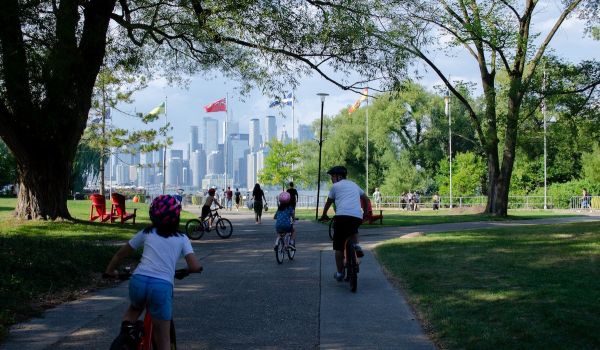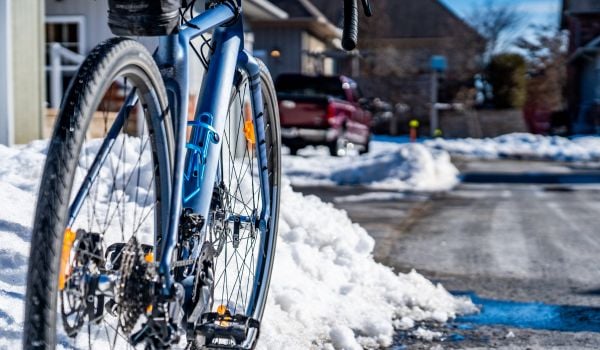When the Copenhagenize Index released its 2019 list of the world’s 20 most bike-friendly cities, not a single U.S. cracked the list. Part of the reason may be a persistent notion in the U.S. that safe and modern bike infrastructure takes decades to build.
A new nonprofit is showing that idea is faulty by proving that a robust bike network can be built in as little as 24 months.
Led by mobility experts Kyle Wagenschutz, Sara Studdard and Zoe Kircos, the Denver-based nonprofit consultancy City Thread is helping cities accelerate the completion of projects that improve mobility, safety and community connectivity for all their residents. City Thread was born out of a proof-of-concept pilot project called The Final Mile, through which five U.S. cities built 335 miles of new bike lanes in only 24 months.
That’s a full 25 years earlier than expected, according to their estimates.
“It takes over a decade in the U.S. to build a complete and safe infrastructure,” Studdard says. “Why are cities not like Amsterdam and Copenhagen? Why are we having disconnected trips across our communities whether we’re walking, biking, taking transit or driving?”
The Final Mile project – a partnership between Wend Collective and People For Bikes – that Studdard and Wagenschutz spearheaded showed just how quickly and efficiently bikeways can be constructed, even in the U.S.
The five cities – Austin, Denver, New Orleans, Pittsburgh and Providence – all had existing relationships from People for Bikes’ prior partnerships. They also, as Studdard put it, “had strong elected political leadership who were already standing at the forefront in the U.S., telling the residents that they deserve a variety of ways to get around their cities.”
What made the pilot program different, and what City Thread hopes to duplicate with other cities, is the inclusion of key players who are often left out of the planning. These include the city officials who carry out bike lane projects, the elected officials who support them, local business owners and the community organizations who engage the residents the lanes will impact most. That includes engaging non-cyclist residents who may not see any personal benefit of bike lanes to them.
“There are projects with real trade-offs that are best understood with a community conversation,” Laura Dierenfield, Austin Transportation Department active transportation and street design division manager, told City Thread in May. “In these cases, we may offer several options, including doing nothing, to gauge folks’ preference over one or another. And sometimes it’s best to just begin by listening without any preconceived idea of what is needed, except to offer what the various modal plans recommend. Only after listening to what the community expresses as [needs], do we then develop and present a proposed design.”
Another key component for The Final Mile’s success was building diverse coalitions of support with the aim of working with local stakeholders and discussing the community’s vision.
“Our interest was not in coming in and saying ‘Hey, bike lanes can solve everything for you,’” Kircos says. “That is not the way we operate and that’s not the way that we think we will be successful.”
That public engagement process is crucial to shape a city’s messaging and strategizing as it plans new bike infrastructure. Through working with community residents and business owners in New Orleans, the city created the New Orleans Complete Streets Coalition to build broad support for “mobility for all.” As a result, the city saw 27 miles of new bikeways constructed in its historically underserved Algiers neighborhood – as well as road repairs, high-visibility crosswalks and other comprehensive improvements to its streets.
Through similar processes, Austin completed 115 miles of new bike lanes; Pittsburgh completed 50 new network miles; Providence constructed 43 miles of new bikeways; and Denver constructed 100 miles of new bikeways.
The communities in the pilot received an average of $2.2 million to help them execute their goals. However, none of that was used towards construction material, setting their bike lane development strategy apart from many other sustainable transportation accelerator programs. Instead, funding was used for technical assistance, public opinion surveys, focus groups, communication campaigns and other such activities.
Many European cities have been lauded for their cycle-friendly roadways as well as their “cycling superhighways” and “bike freeways.” Transportation experts say because those cities have been able to develop strong cycling networks ahead of the demand and, as researchers tell Business Insider, because their transportation departments “think top-down rather than bottom-up.”
“Amsterdam and Copenhagen are fabulous examples of cities that looked at their horizon and saw where automobile dependence was taking them — in terms of the environment, in terms of access to opportunity, in terms of financial cost, the financial burden of providing streets for cars, and they said, ‘We need to do something different,’” Tabitha Combs, a researcher of transportation planning and policy at the University of North Carolina at Chapel Hill, told Business Insider. “Places like that built out their bicycling networks and their walking networks in advance of the demand, and they’re still building out those networks.”
In 2020, the COVID-19 pandemic brought on a surge in cycling in the U.S. Some preferred choosing to bike over using public transportation. And some turned to biking due to gym closures, making it one of the most popular forms of recreation.
Cities all over the world were forced to reevaluate their bike infrastructure. Some cities, like Berlin and Paris, successfully created temporary pop-up bike lanes by reallocating streets and public spaces to accommodate cyclers.
The lessons learned from bike lanes that were created rapidly during The Final Mile project and the pandemic should shape future policies for building safe and effective bike infrastructure as a tool for mobility justice, City Thread says.
“Any time cities want to put heads and hearts together with their citizens to make their city a great place to live, City Thread can help,” Studdard says. “We have the tools to help them be more successful. The rest is communications, planning and working toward shared desires in good faith.”
Yasmin Garaad is a New Orleans-based writer who covers the city’s arts and culture as well as environmental justice.

